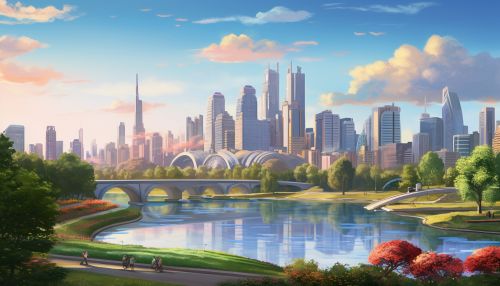History of the Midwestern United States
Early History
The Midwest, also known as the American Heartland, has a rich history that dates back thousands of years. The region was first inhabited by various Native American tribes, who lived in the area for millennia before the arrival of European settlers. The Midwest was a crucial area for Native American trade routes and cultural exchange, and many tribes such as the Mississippians, Hopewell, and Cahokia left a significant mark on the region's history[^1^].


The first Europeans to explore the Midwest were French, including Jacques Marquette and Louis Jolliet, who journeyed down the Mississippi River in 1673. The French established several colonies in the region, including Detroit and St. Louis, which became important centers of fur trade[^2^].
American Expansion
The Midwest became part of the United States through the Louisiana Purchase in 1803, which doubled the size of the country[^3^]. This led to a period of rapid expansion and settlement, known as the frontier era. The Midwest was the destination for many settlers, drawn by the promise of fertile farmland and the opportunity for a new life.


The Midwest was also a battleground for conflicts between settlers and Native American tribes, such as the Black Hawk War and the Dakota War of 1862. These wars resulted in the forced removal of many tribes from the region[^4^].
Industrialization and Urbanization
The late 19th and early 20th centuries saw the Midwest transform from a largely rural, agricultural region to a hub of industry and urbanization. Cities like Chicago, Cleveland, and Detroit grew rapidly, fueled by the growth of industries such as steel, automobiles, and meatpacking[^5^].
The Midwest also became a destination for many immigrants, who came to the region in search of jobs and opportunities. This influx of immigrants contributed to the cultural diversity of the region and had a significant impact on its social and cultural development[^6^].
The Great Depression and the Dust Bowl
The Midwest was hit hard by the Great Depression in the 1930s. The economic downturn led to widespread unemployment and poverty. The region was also affected by the Dust Bowl, a severe drought that led to widespread crop failure and forced many farmers to abandon their land[^7^].
Despite these hardships, the Midwest also saw significant social and political change during this period. The New Deal programs of President Franklin D. Roosevelt brought relief to many Midwesterners and helped to modernize the region's economy[^8^].
Post-War Era and Modern Midwest
The post-World War II era brought prosperity and growth to the Midwest. The region's industries boomed, and its cities and suburbs expanded. However, the late 20th century also brought challenges, including economic restructuring and the decline of traditional industries[^9^].
Today, the Midwest is a diverse and dynamic region, with a mix of urban and rural areas, and a diverse economy that includes manufacturing, agriculture, and services. The region's history continues to shape its present and future[^10^].


See Also
References
[^1^]: Smith, M. (2009). The Archaeology of Native America. University of Florida Press. [^2^]: Ekberg, C. (2000). French Roots in the Illinois Country. University of Illinois Press. [^3^]: Kukla, J. (2003). A Wilderness So Immense: The Louisiana Purchase and the Destiny of America. Knopf. [^4^]: Jung, P. (2007). The Black Hawk War of 1832. University of Oklahoma Press. [^5^]: Meyer, D. (1989). Midwestern Industrialization and the American Manufacturing Belt in the Nineteenth Century. The Journal of Economic History. [^6^]: Bodnar, J. (1985). The Transplanted: A History of Immigrants in Urban America. Indiana University Press. [^7^]: Worster, D. (1979). Dust Bowl: The Southern Plains in the 1930s. Oxford University Press. [^8^]: Badger, A. (1989). The New Deal: The Depression Years, 1933-1940. Macmillan. [^9^]: Sugrue, T. (1996). The Origins of the Urban Crisis: Race and Inequality in Postwar Detroit. Princeton University Press. [^10^]: Teaford, J. (2002). Cities of the Heartland: The Rise and Fall of the Industrial Midwest. Indiana University Press.
